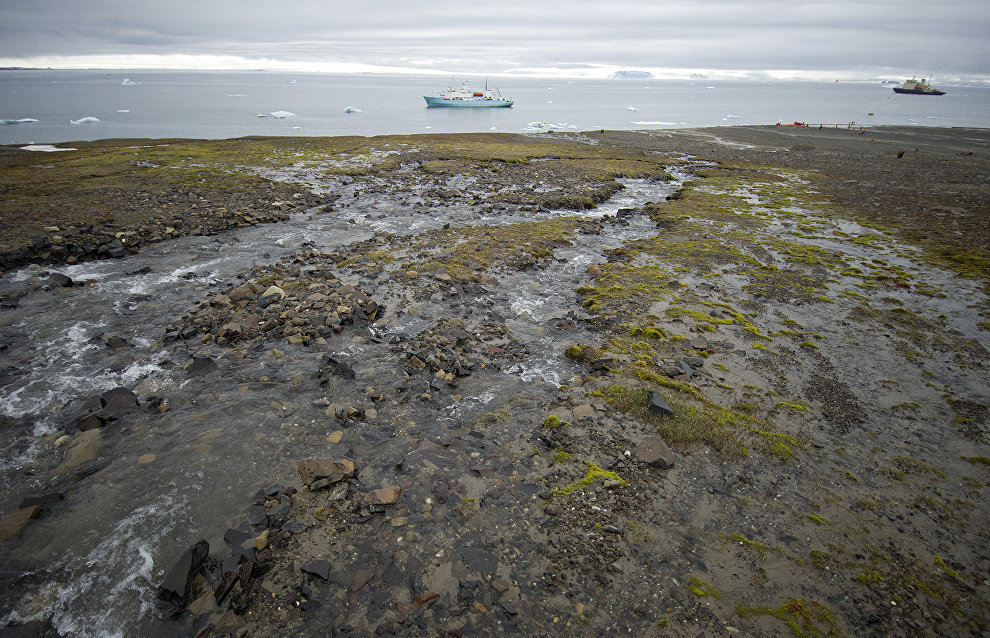2017 Arctic Floating University expedition finds US explorer’s base remains in the Arctic
During the 2017 Arctic Floating University expedition, researchers found spherulites (spherical stones) on Champ Island, as well as the remains of the base of US traveler Evelyn Baldwin, who tried to reach the North Pole, the website of Lomonosov Northern (Arctic) Federal University reported.
"We have come across a site dating back to the first stage of active exploration of Franz Josef Land. It is in satisfactory condition. This is the remains of the base Baldwin used between the years 1901-1903. The findings include fragments of American field utensils used by the crew. They have been sent to the Russian Arctic National Park for reconstruction," the university's press service said citing Konstantin Zaikov, head of the expedition and Director of the Arctic Center for Strategic Research at the Northern (Arctic) Federal University.
The expedition led by Evelyn Baldwin headed to Franz Josef Land in 1901 to conquer the North Pole. The ship America wintered near Alger Island, where several huts were built.
Also, the 2017 expedition members discovered spherulites, or concretions — "balls that are associated with Champ Island."
"We found identical balls on neighboring Heiss Island. This is a very interesting and important discovery. It tells us that Champ Island is a continuation of that mountain massif that is located on Heiss Island and they have a common geology. Now we are negotiating with Russian Arctic National Park on the transfer of these artifacts to the geological museum of Northern (Arctic) Federal University, so that it has such unique finds in its collection that will be of interest to young scientists, students and locals," said Zaikov.
Also, scientists again found traces of paleofauna on Alexandra Land, in Topografov Bay. "We found remnants of vegetation from the Jurassic period — its traces on stone. Unfortunately, the stones were large, so we could not take them with us," said Zaikov.
